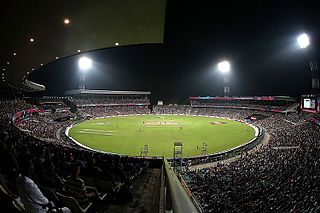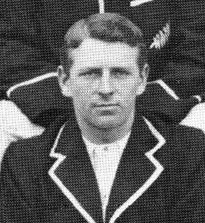 | |||||||||||||||||||||||||||
| Personal information | |||||||||||||||||||||||||||
|---|---|---|---|---|---|---|---|---|---|---|---|---|---|---|---|---|---|---|---|---|---|---|---|---|---|---|---|
| Full name | Cyril Gore Crawford | ||||||||||||||||||||||||||
| Born | 13 March 1902 Christchurch, New Zealand | ||||||||||||||||||||||||||
| Died | 17 June 1988 (aged 86) Christchurch | ||||||||||||||||||||||||||
| Batting | Right-handed | ||||||||||||||||||||||||||
| Relations | Bill Playle (nephew) | ||||||||||||||||||||||||||
| Domestic team information | |||||||||||||||||||||||||||
| Years | Team | ||||||||||||||||||||||||||
| 1920–21 to 1931–32 | Canterbury | ||||||||||||||||||||||||||
| Career statistics | |||||||||||||||||||||||||||
| |||||||||||||||||||||||||||
Source: Cricinfo, 11 December 2014 | |||||||||||||||||||||||||||
Cyril Gore Crawford (13 March 1902 – 17 June 1988) was a cricketer who played first-class cricket for Canterbury from 1921 to 1932 and played for New Zealand in the days before New Zealand played Test cricket.

Cricket is a bat-and-ball game played between two teams of eleven players on a field at the centre of which is a 20-metre (22-yard) pitch with a wicket at each end, each comprising two bails balanced on three stumps. The batting side scores runs by striking the ball bowled at the wicket with the bat, while the bowling and fielding side tries to prevent this and dismiss each player. Means of dismissal include being bowled, when the ball hits the stumps and dislodges the bails, and by the fielding side catching the ball after it is hit by the bat, but before it hits the ground. When ten players have been dismissed, the innings ends and the teams swap roles. The game is adjudicated by two umpires, aided by a third umpire and match referee in international matches. They communicate with two off-field scorers who record the match's statistical information.
First-class cricket is an official classification of the highest-standard international or domestic matches in the sport of cricket. A first-class match is of three or more days' scheduled duration between two sides of eleven players each and is officially adjudged to be worthy of the status by virtue of the standard of the competing teams. Matches must allow for the teams to play two innings each although, in practice, a team might play only one innings or none at all.

Canterbury is a New Zealand First-class cricket team based in Canterbury, New Zealand. It is one of six teams that make up New Zealand Cricket and has been the second most successful domestic team in New Zealand history. They compete in the Plunket Shield First-class competition and the Ford Trophy one day competition. They also compete in the Burger King Super Smash competition as the Canterbury Kings.
A middle-order batsman, Crawford struggled to establish a place in the Canterbury side until he scored 61 against the touring New South Wales team in 1923–24, when he "played the soundest cricket of any one on the side" and "more than justified his inclusion". [1] The next season, against the Victorians, he made 70 batting at number three, [2] when he "gave a sound exhibition of batting" and "made quite a lot of fine scoring shots", particularly the cut. [3]

The New South Wales cricket team are an Australian men's professional first class cricket team based in Sydney, New South Wales. The team competes in the Australian first class cricket competition known as the Sheffield Shield and the limited overs JLT One-Day Cup. The team previously played in the now defunct Twenty20, Big Bash, which has since been replaced by the Big Bash League since the 2011–12 season. New South Wales were the inaugural winners of the Champions League Twenty20.

The Victoria cricket team, who were named Victorian Bushrangers between 1995 and 2018, is an Australian first-class cricket team based in Melbourne, Victoria. The Victoria cricket team, which first played in 1851, represents the state of Victoria in the Sheffield Shield first-class competition and the JLT One Day Cup competition. The team's primary home ground is the MCG, but Junction Oval is used as its home ground if the MCG is not available.
He toured Australia with the New Zealand team in 1925–26, but failed in his two matches against state teams, although he scored 121 in a two-day match against a Northern Districts of New South Wales XI in the last match of the tour. [4] He played a few more Plunket Shield matches over subsequent seasons with little success.

New Zealand has had a domestic first-class cricket championship since the 1906–07 season. Since the 2009–10 season it has been known by its original name of the Plunket Shield.
Crawford was a stalwart of the St Albans club in Christchurch, playing 223 matches over nearly 30 years. [5] He was a life member of the Canterbury Cricket Association. [6]











